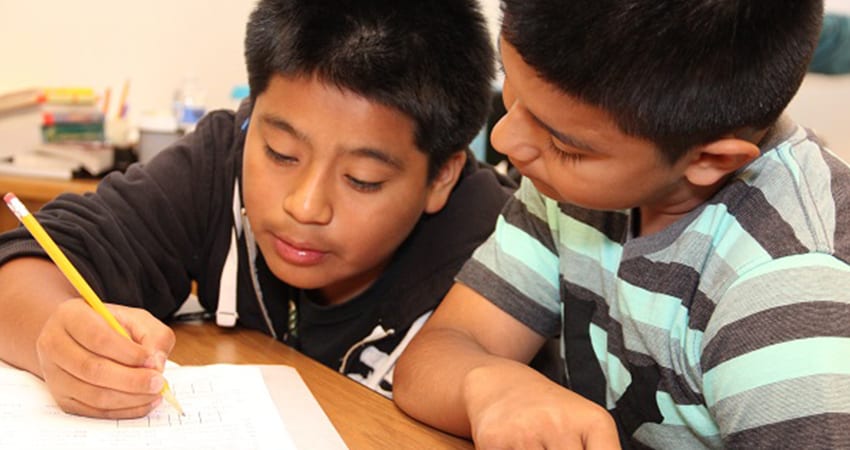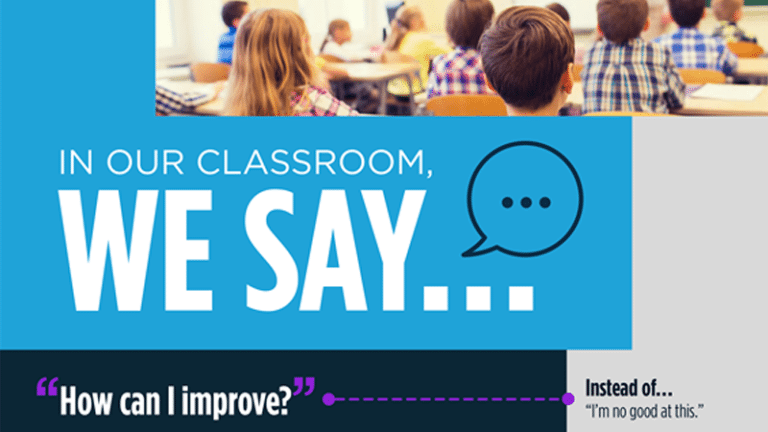“Visible learning” is a ground-breaking concept coined by education researcher John Hattie. It establishes that learning must be seen and obvious, not assumed. Frey and Fisher explain it using height as an example. When establishing a change or difference, it’s not enough to see the difference in height between one person who is 5’3” and another who is 5’4”. Instead, a more obvious visible difference, like between a person who is 5’5” and one who is is 6” tall, is a better teacher of height difference. It’s exciting to think that with some scaffolding, and the intentional use of specific strategies and assessment, you will be able to identify exactly what part of the teaching process worked, and student learning will be visible.
To make this happen in your classroom, “students [and adults] have to know what they are learning, why they are learning it, how they will know they have learned it, and what it means to have learned.” To achieve this, teachers use learning intentions and success criteria on a daily basis. Learning intentions and success criteria contribute significantly to teacher clarity, which Hattie’s research shows has can double or triple student learning. Another critical part of increasing student learning is to attend to the three phases of learning: surface, deep, and transfer. We’ve done the heavy lifting for you and come up with nine tips for making learning more visible in your classroom:
Surface learning
This is learning in order to reproduce the same product, like multiplication facts. This kind of learning gets a bad rap, but it’s a must. We can’t ask students to use information or knowledge they haven’t learned yet. Here are three ways to scaffold and develop surface learning:
1. Use prior knowledge to enhance learning
Prior knowledge can help slide a student into the learning instead of creating a barrier. Be careful though, just because a student already knows something, doesn’t mean they know it correctly. You can use anticipation guides to help correct those misconceptions before asking students to build on that knowledge. It’s not cheating to get kids connected to what’s about to be learned, it’s intelligent teaching.
2. Incorporate vocabulary techniques
Learning words requires more than just exposure to the word. There are several successful techniques for teaching vocabulary words to help kids problem-solve for themselves.
- Mnemonics: using memory aids
- Word cards: dividing an index card into four sections including: word, definition, opposite, illustration
- Model word solving: think out loud about how you word solve so that students can watch thinking in action
- Word and concept sorts: give kids opportunities to sort words and classify them on their own
3. Put reading comprehension into context
Teaching children to understand what they read requires you to use a mix of activities and materials. Everything a teacher does is designed to help a student develop the ability to organize and analyze information. That’s what makes it such a tough job! It’s important to help kids add context to what they are reading as they read. Teaching them different strategies like brief summaries, Cornell notes, and annotation can help them figure out what works best for their comprehension.
Deep learning
This is learning in order to understand. “Deep learners,” according to Frey and Fisher, “seek to interact with content and ideas, and actively link concepts and knowledge across content.” When teachers activate surface learning, but expect deep thinking, students respond. Here are three teaching tools for deep learning:
4. Concept mapping
Concept maps and graphic organizers scaffold students to be able to organize their information and thinking. It is this intermediate step that supports extended writing and discussion of ideas. Using maps to guide your students in the way you’d like them to begin thinking can help speed up the time it takes to get them there. This can be helpful in class when you need to move them past surface learning and into deep learning. Popplet is a cool online tool you can use to make concept mapping easy and engaging.
5. Discussion and questioning
Both discussion and questioning in the classroom create a place to foster deep learning. The more a student struggles with comprehension, the more value there is to asking questions and discussing thinking. Make sure to focus on discussion questions that require deep thinking rather than those that expect surface answers. “Can you tell us more about that?” allows students to understand that you expect them to be showing evidence that supports their thinking.
6. Metacognitive strategies
Metacognition in literacy consists of:
- information about how we learn
- understanding what we have to do in order to complete an assignment
- a system for monitoring our own learning
It’s the way we watch ourselves learn. You can help your students learn this amazing skill by teaching students to ask the right questions. One authentic activity that you can use right now to engage kids in why this skill matters is to try out a website evaluation tool. This tool will help them track how they think as they surf different websites.
Transfer learning
This type of learning moves students into owning their learning and applying that knowledge to different situations. In this way, students are motivated by their own curiosities. You can tell when a student has transferred knowledge when you hear that aha! moment. That time when a child says, “Hey, that’s just like when that different character in another book did this!” Those moments of recognizing similarities and differences across subjects and literature makes teachers super proud. Am I right? That’s what we live for. That’s the reason it’s so important to engage students in all three types of learning. Here are three examples of transfer learning:
7. Reading across documents
Using this strategy, which you’ll find in many of the newer standardized testing products, students read several different documents and then synthesize information. This fairly difficult activity requires all three learning types: surface, deep, and transfer. If students don’t practice this skill often, they won’t do well when they are required to do it independently. It does not come naturally, but must be explicitly taught and experienced. When teachers give students appropriate and immediate feedback during this process, students can be quite successful in their mastery of it.
8. Problem-solving teaching
Teachers have been using a version of problem-based learning forever. Many though, aren’t using it correctly. Make this one tweak and you could be quite effective. Instead of issuing a problem and inviting students to solve it, you can share conflicting information. Then, ask groups to identify what they think the problem is, and how best to solve it, supporting their reasons with evidence. Here’s an example: Should we protect undocumented immigrants in the U.S.? In asking this question you aren’t defining the problem. Next, locate a few conflicting articles showing both how undocumented immigrants take U.S. citizens’ jobs and how immigrants can make an economy stronger. Then, share a problem-solving method like Woods’. Have them work together through the steps to identify the problem statement and then work to solve it. They will have to move flexibly between surface, deep, and transfer learning in order to accomplish this. No easy task to be sure, but possible for all of them together.
9. Extended writing
Assigning writing activities that extend learning can be a rewarding way to move students into transfer learning. The critical component that makes these extended activities successful is that they involve the use of knowledge, deep thinking, and transfer of information across disciplines. You’ll be able to observe and identify what type of learning a student is using at any stage in the process. Your conferences can be used to name what they are doing and help them set goals to move into a different type of learning.
While it’s nice to know that students liked an activity or lesson or that you thought it went well, liking is not enough. You also need to know what impact the lesson had on learning—and that impact should be visible. Start with lessons that have clear intent and make sure students know what they should be accomplishing and how. Give them feedback very soon after a project or lesson is complete so that they can use what they learned to improve their learning going forward. This is the toughest work out there, but also the most rewarding.


